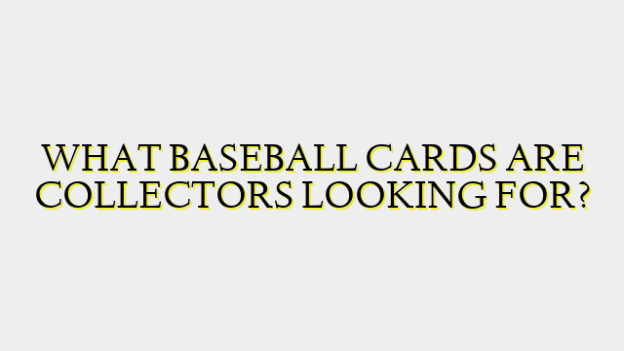Baseball card collecting is a huge hobby with dedicated collectors diligently searching for rare and valuable cards. There are certain cards from over the decades of baseball history that collectors are always on the hunt to find. One of the most sought after cards is the Honus Wagner tobacco card from 1909-1911. This is considered the holy grail of baseball cards with fewer than 60 known to still exist today. Wagner was a superstar of the early 1900s and he refused the American Tobacco Company permission to use his image on their baseball cards. A small run of cards featuring Wagner were accidentally printed and inserted in packs. With such a small print run and Wagner’s insistence they not be produced, these cards have become incredibly rare and valuable. The highest price ever paid for one in good condition was $6.6 million in 2016.
Another top priority for collectors are cards of baseball legends from the early 20th century before more modern players. This includes cards of Babe Ruth from when he played for the Boston Red Sox in the 1910s. His first baseball card came in 1914 while still with the Red Sox and legions of collectors search flea markets, antique shops, and eBay hoping to find one in excellent condition. Ty Cobb cards predating 1920 also command huge prices due to his status as one of the first true baseball superstars and his incredibly talented and record setting career. His 1909-1911 T206 card is one of the most iconic of the early 20th century.
Moving into the post-World War 2 era, collectors seek out rookie cards for all-time great players like Mickey Mantle, Willie Mays, Hank Aaron, and Roberto Clemente. Mantle’s 1952 Topps rookie card is widely considered the most valuable post-war card and has sold for over $2 million. While Mays debuted professionally a bit later in 1951, his 1951 Bowman rookie remains hugely important in the hobby. Aaron and Clemente also had stellar careers and their rookie cards from the 1950s can sell for five or six figures depending on condition.
In the 1960s, interest grew in collecting players from the current era. Many collectors cherish cards of 1960s and 1970s superstars in their early career years like a 1968 rookie Nolan Ryan card or a 1972 Steve Carlton rookie PSA 9 or 10 gem mint. A 1969 rookie card of Reggie Jackson in top condition would excite collectors. In the late 60s and 70s, many players debuted in the high quality 1968 Topps or 1969 Topps set and those early cards are still revered today.
Moving into the 1970s-1980s, collectors aim to find stars before their huge popularity. This includes a 1975 Reggie Jackson, a 1977 Dale Murphy, or 1979 Keith Hernandez rookie. The early 80s also brought premier players like Cal Ripken Jr. and Tony Gwynn who debuted in 1981. Their rookie cards remain top hunts for collectors. Another major star of the era with a relatively scarce early card was Ozzie Smith. His 1978 Bowman card comes in high demand.
In the junk wax era of the late 80s, while production numbers ballooned, certain stars debuted who are now in the Hall of Fame like Ken Griffey Jr. Collectors treasure his Upper Deck rookie from 1989. The same goes for 1990 Barry Bonds and 1991 Chipper Jones rookie cards. These players were destined for greatness and their earliest cards hold significant value. Griffey’s rookie is one of the most iconic of the modern baseball card era.
Moving into the 1990s, cards of elite players before they achieved stardom gain higher premiums. This includes rookies of Frank Thomas from 1991, Greg Maddux from 1986 or 1988, or Tom Glavine from 1987 as just a few examples. Finding these stars in their earliest stages with clean, centered rookie cards creates excitement among collectors. The same excitement surrounds 1995 Derek Jeter and 1994 Nomar Garciaparra rookies which come with reputations as two of the most visually striking designs ever.
Into the 2000s and beyond, collectors focus on recently retired all-time greats and current stars when they were early in their careers. This could mean hunting 2007 Bryce Harper, 2008 Evan Longoria, or 2009 Mike Trout rookie cards which seem to gain more prestige by the year as those players cement their Hall of Fame resumes. Collectors understand that having a star’s earliest relic is a coveted find. As years pass, the earliest cards of current elite players like Christian Yelich, Cody Bellinger, Fernando Tatis Jr. and many others will likely become priority possessions.
In the end, there remains no replacement for the true legends of the game in their earliest professional years. But dedicated collectors understand that finding any future Hall of Famer before most casual fans knew their name creates a special feeling. The hunt for rare and coveted early cards of all-time greats never ends in the passionate world of baseball memorabilia collecting.

